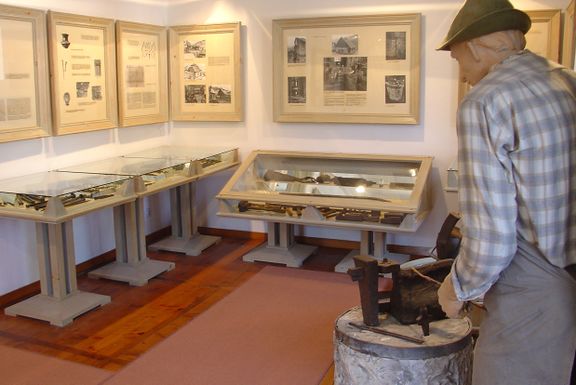Kropa Iron Forging Museum
|Class 'MediaWiki\Extension\Xoo\ParserFunctions\Variables' not found
| first = }}{{#arr:dataloop |Class 'MediaWiki\Extension\Xoo\ParserFunctions\Variables' not found
| first =-
| each =
-
18 Jan 2025
{{{Country}}} {{{City}}} {{{Venue}}}
{{{Description}}}
}}{{#arr:dataloop |Class 'MediaWiki\Extension\Xoo\ParserFunctions\Variables' not found
| first =-
| each =
-
18 Jan 2025
{{{Country}}} {{{City}}} {{{Venue}}}
{{{Description}}}
{{#arr:dataloop |Class 'MediaWiki\Extension\Xoo\ParserFunctions\Variables' not found
| first =
-
| each =
- [{{{Url}}} {{{Name}}}], {{{Year}}}, [[{{{Department}}}]]
[{{{Ccp}}} Project summary]
| last = Show more
}}
History
Notable development of town Kropa begun in 14th century. Important archaeological finding of how iron was forged in middle ages is so called Slovenian Furnace that was found during excavations for the road towards Jamnik village above Kropa. In 15th century already two iron forging furnaces and blacksmith workshops existed. Peak of iron forging was in 18th and 19th century two iron foundries, 7 forge semimanufactures (cajnarica) and 19 spike-forges (vigejnc) were operating and employed about 1000 people. At the end of the 19th century industrialization changed iron foundy into industy cooperative (1893) that became later in 20th century screw factory Plamen.
See Also
Other blacksmith's museums




